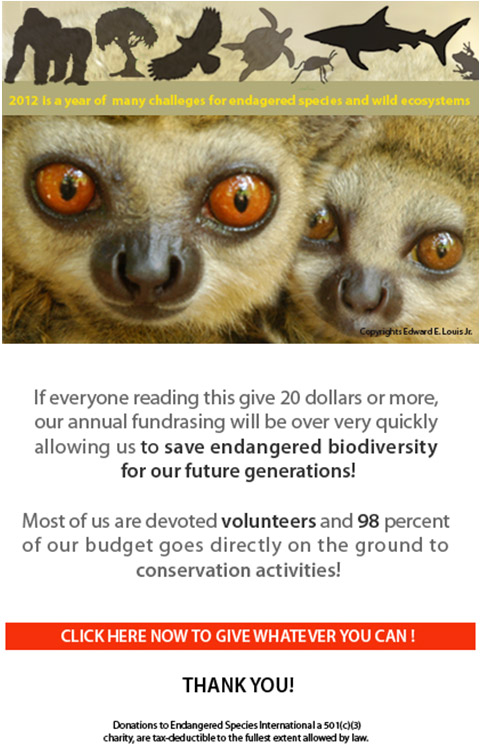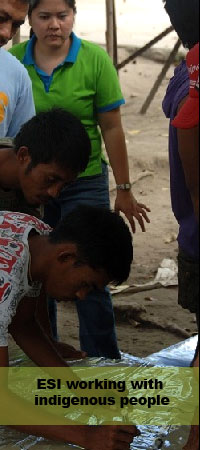ESI Organic farming for the indigenous people a success!
ESI organized free organic farming training for the Bl’aan indigenous people, one of the poorest communities in the Philippines. Indigenous people walked up to two hours to reach the organic experimental farm where the training occurred. ESI works hand and hand with the Bl’aans and make sure to empower them by learning new farming techniques. ESI makes significant efforts to upgrade the living conditions of indigenous people throughout their own visions and preferences.
ESI Congo: Hunters for gorilla conservation!
Franck Makoundi of ESI Congo will conduct an important field expedition along the Kouilou this month in remote southern Congo. He will organize meetings to prepare the creation of the hunting cooperative for the conservation of gorillas. He will also assess illegal hunting activities in the Laoka area to make sure that no gorillas are killed.
Proposal to donate land for the endangered desert tortoise
ESI received an opportunity to acquire land for the preservation of the endangered desert tortoise (Gopherusagassizii) in Southern California to protect more habitats. The land is located near the current desert tortoise reserve. The desert tortoise is found in the Mojave and Sonoran Deserts in North America. You can learn more about the desert tortoise here.
The B’laan indigenous people have fun mapping tarsier habitat
There is more fun in traditional over digital mapping. It may not be as good as the conventional one but its’ contents and uses are the same. The B’laans mapped boundaries, landowners, plant and animal species, forest cover, and building structures for the creation of a protected area. Assisted by the Provincial Environment and Management Office, the B’laans produced an alternative map with legends via the Community Based Resource Assessment and Mapping (CBRAM). CBRAM is very important in planning for the sustainable development of the proposed tarsier habitat protected areathrough community participation.
Progress towards the tarsier protected area
Progress has been made towards the creation of the Philippine tarsier protected area. The protected area will provide vital habitat for safeguarding the Philippine tarsier and a myriad of rare animals and plants. Further, native and endemic trees will be planted in various areas. Habitat mapping, tarsier surveys, creation of interpretative signs, trainings, and trail improvement are part of the current activities. ESI anticipates creating the protected area during 2012.
Coral reef and marine conservation
ESI conducted conservation awareness about the need to protect coral reefs and the ocean at the community levels. We also monitored coral reefs at various sites to assess the health of corals and improve their protection.The world's corals and coral reef ecosystems are in crisis and concrete actions are needed on the ground.
ESI Congo selected by the French Global Environmental Fund (FGEF)
155 non-profit organizations submitted proposals to save biodiversity in Africa and the best eleven projects were selected by FGEF. The fund provided by FGEF will allow ESI Congo to pursue its innovative approach to protect gorillas in part via the hunting cooperative for gorilla conservation. ESI Congo finds new practical solutions to save endangered gorillas and their forests. Gorillas are killed for their meat and their habitat reduced by illegal logging activities. The FGEF focuses on preserving biodiversity and international waters, as well as acting on climate change, persistent organic pollutants, land degradation, desertification and deforestation.

|









